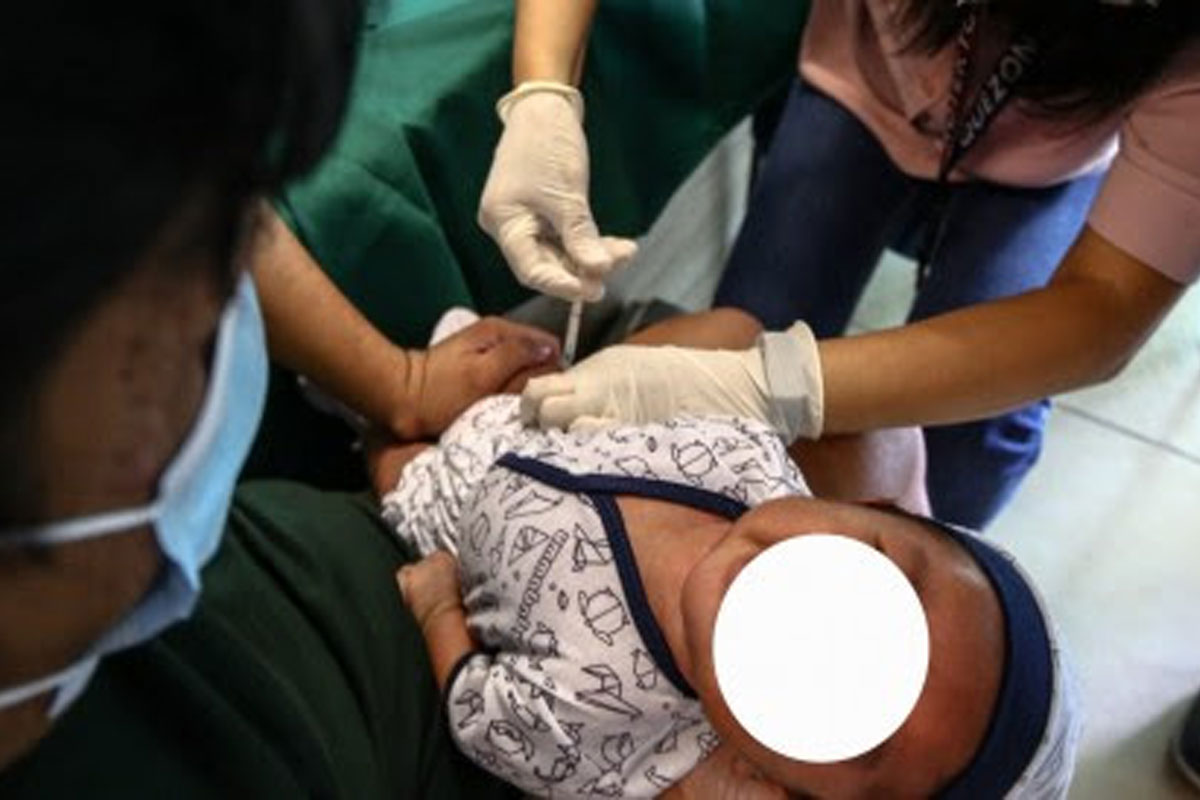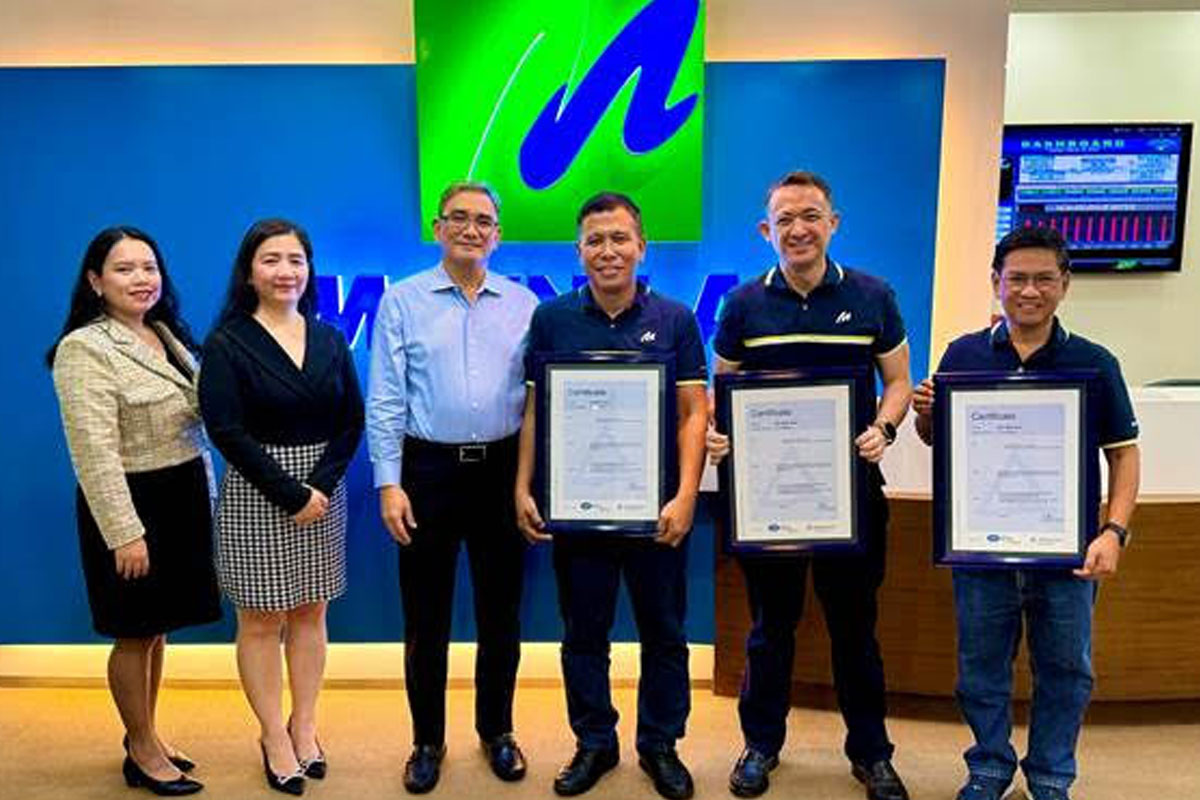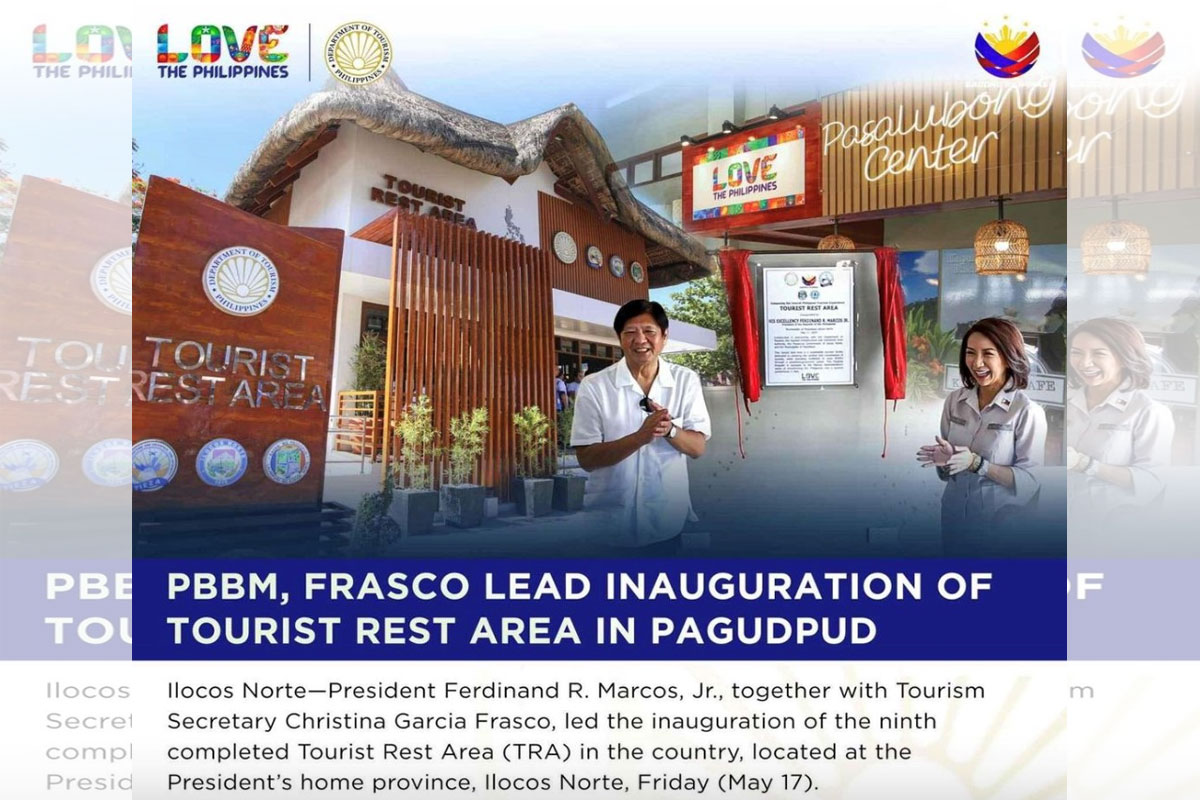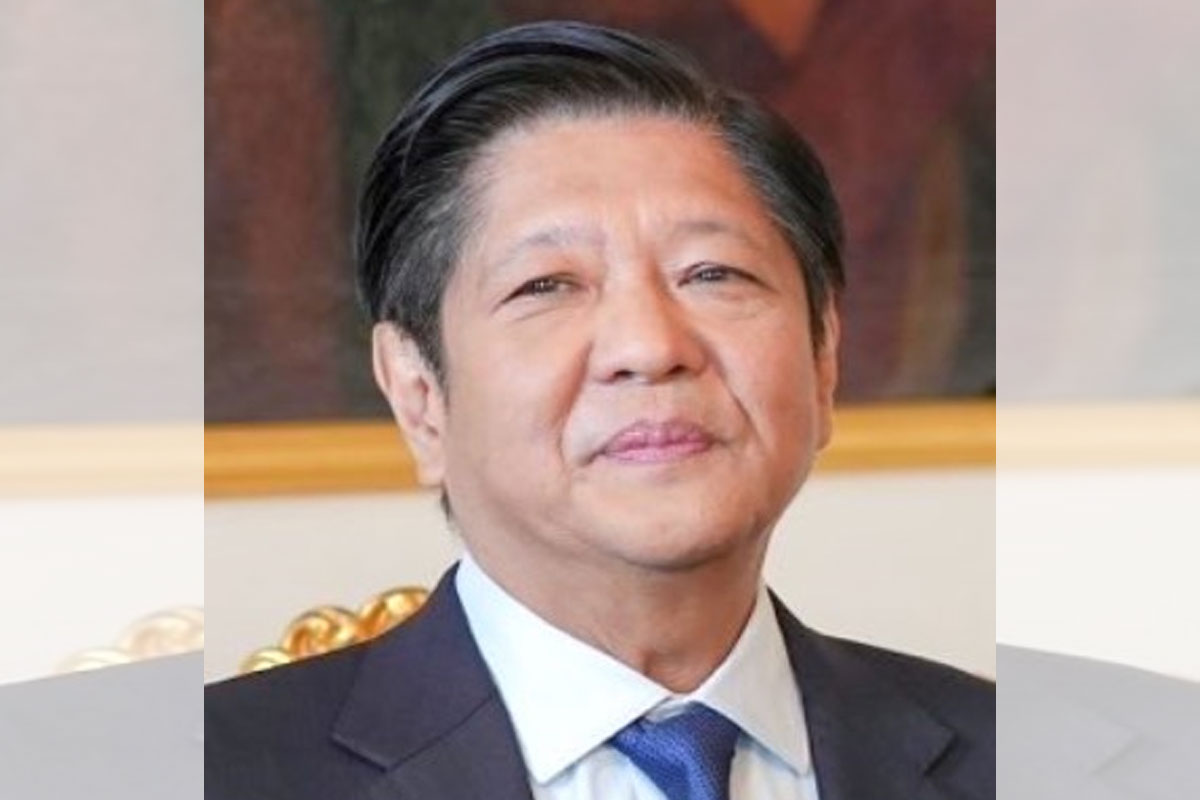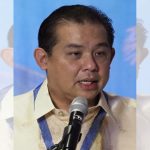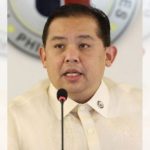
Villafuerte suggests ‘sariling sikap’ for PH
To raise climate action money
THE jury is still out on whether the final deal on a “just, orderly and equitable” switch to clean energy hammered out at last week’s 28th Conference of Parties to the United Nations or UN Framework Convention on Climate Change (COP28) in Dubai, would let the world transition fast enough away from fossil fuel, according to Camarines Sur Rep. LRay Villafuerte.
But there is relative certainty about what must be done forthwith with regard to the first-ever “Loss and Damage” Fund (LDF) put up at the same summit in Dubai to recompense the most climate vulnerable economies like the Philippines that are being plagued by the unbridled carbon pollution by the world’s wealthiest states, Villafuerte, National Unity Party (NUP) president, said.
With the wealthiest polluter-economies that profited the most from the use of fossil fuel failing to commit at the end of COP28 how much exactly they must cough up regularly for the new LDF, Villafuerte said the operative words for the Philippines and other similarly hapless countries for the time being are: “Sariling Sikap.”
Although COP28 yielded a significant win with the establishment on Day 1 of the two-week summit of , the LDF, which climate vulnerable countries have long been clamoring to set up as reparation money for them by affluent nations that have become rich or richer by exploiting fossil fuel since the Industrial Age.
LDF’s framework was agreed upon during last year’s COP27 at the Egyptian city of Sharm el-Sheikh.
After $424 million in voluntary donations were forked over by COP28 host country United Arab Emirates (UAE) and other donors at the start of the annual climate summit last Nov. 30, the LDF grew to $726 million by the time the conference ended last Dec. 13, but there was no talk whatsoever over those two weeks about the target annual amount for this compensation fund, much less whether contributions would just be voluntary or mandatory for polluter-countries.
Among the early donors, aside from UAE, were Japan, the European Union (EU) including Germany, the United Kingdom (UK) and the United States (US).
“There was no talk at all for the next two weeks of the Dubai conference who among the Global North economies that are also the world’s biggest carbon polluters must contribute to the L&D and by how much and how frequent, and who among vulnerable developing states and island nations can available of the money and for what specific projects,” Villafuerte said.
Moreover, he said, the initial amount of $726 million that a few wealthy states turned over to the L&D fund in the course of the summit was just “a drop in the ocean, when compared to the $100 billion that big polluter-states pledged way back in COP15 in Denmark in 2009 to give annually to vulnerable countries beginning 2020—a promise that the supposed donor-economies have failed to deliver up to now.”
A report released during COP28 estimated that emerging markets and developing countries will need $2.4 trillion a year in investments to cap greenhouse gas (GHG) emissions and adapt to the challenges posed by climate change.
“The nitty gritty of the L&D fund will have to be sewn up a year from now, at the earliest, in COP29, or worse, in succeeding COP annual conferences,” he said. “So it makes sense for climate-vulnerable yet resources-challenged countries like the Philippines that are bent on accelerating their climate mitigation and adaptation programs while going ahead on their lofty goals on decarbonization and clean energy switch, to do ‘sariling sikap’—scour for and harness quickly whatever funds are available right now from donor countries and institutions for climate action.”
COP28 approved last Dec. 11 a proposal to hold next year’s UN climate talks in Azerbaijan, the former Soviet republic that straddles West Asia and Eastern Europe.
But this early, there are fears among environment activists that climate action might be waylaid once more in COP29 if it will be held in oil-rich Azerbaijan, whose oil, natural gas and petroleum products account for 90% of its exports.
Hence, with climate justice likely on hold in COP29, and possibly in the succeeding summits as well, Villafuerte suggested that “the Philippines augment its available resources for climate action with additional funds within easy reach, such as the financial assistance announced separately just recently by the Asian Development Bank (ADB) and the Canadian government (in partnership with the UN Development Program or UNDP), for example.
Villafuerte recalled that in a high-level dialogue on the sidelines of COP28 in Dubai, ADB president Masatsugu Asakawa told ministers of various countries, including Marcos cabinet members, that the Bank is extending $10 billion in climate finance for the Philippines between 2024 and 2029 to help our country meet its commitments under the Paris Climate Accords (Paris Agreement).
One hundred ninety-six (196) parties that attended COP21 in Paris in 2015 agreed to keep the rise in global temperatures to 2 degrees Celsius above pre-industrial levels, and then pursue efforts to bring it down further to 1.5 degrees Celsius by 2050.
To meet this ambitious goal, the Philippines, as a signatory to this 2015 Paris Agreement, committed to a GHG emissions reduction and avoidance of 75% for the farm, wastes, industry and energy sectors over the 2020-2030 period.
“I am pleased to announce that ADB will program $10 billion in climate finance for the Philippines under the new country program we are developing with the government. ADB will also continue efforts to mobilize additional climate finance from the private sector, co-financing partners, and other sources,” said Asakawa during an ADB-organized dialogue in Dubai for ministers that was attended by Finance Secretary and ADB governor Benjamin Diokno and Environment Secretary Maria Antonia Yulo-Loyzaga, who headed the Philippine delegation to COP28.
ADB said the $10-billion fund would support low-carbon transport, renewable energy, the development of carbon markets, flood management, resilient coastal development, food security and adaptive health and social protection in the Philippines, which the Global Climate Risk Index has ranked No. 4 among countries most affected by extreme weather conditions over the 2000-2019 period.
Villafuerte said the Marcos administration has also announced separately that it had been working with the UNDP and Canada on funding climate-related projects through a $5.3-billion global climate financing pledge of the Canadian government.
The Canadian aid is intended for Philippine projects promoting biodiversity conservation, climate change mitigation, adaptation and resilience with consideration for gender equality.
Global Affairs Canada Climate Finance executive director Andrew Hurst said that to help developing countries like the Philippines transition to low-carbon, climate-resilient, nature-positive, and inclusive sustainable development, Ottawa is increasing the proportion of grant funding, set a minimum for funding climate adaptation projects along with projects that leverage nature-based climate solutions and projects.
As conceded by Diokno, Villafuerte said the Marcos government wants to replenish its People’s Survival Fund (PSF) with help from various donors and multilateral institutions.
Chaired by Diokno as finance secretary, the PSF Board recently approved P539 million-worth of climate adaptation projects, including irrigation infrastructure, early warning and drainage systems and reforestation projects.
Put up under Republic Act No. 10174 in 2012, the PSF is supposed to have an annual outlay of P1 billion for climate adaptation programs and projects of local government units (LGUs) and accredited local and community organizations.
Over a hundred country-participants had lobbied at COP28 for a landmark agreement to “phase out” oil, gas and coal use, but the final text approved after the parties worked overtime for a day till Dec. 13 was watered down amid opposition from the Organization of Petroleum Exporting Countries (OPEC) and their allies that control about 80% of the world’s proven oil reserves.
The final statement adopted at the end of COP28 skirted the word “phaseout” and instead called for “transitioning away from fossil fuels in energy systems, in a just, orderly, and equitable manner …so as to achieve net zero by 2050 in keeping with the science.”
Oil, gas and coal account for roughly 80% of global energy.
On the bright side, Villafuerte said the Philippines was nominated as a regular member for the Asia-Pacific Group (APG) in the inaugural LDF Board in 2024 and in 2026, and as an alternate board member in 2025.
This will give the Philippines a chance, he said, to influence decision-making with regards to which vulnerable countries can avail of the LDF money.
He said the Philippines’ membership in the LDF Board in its initial three years will afford the Marcos government with a more powerful voice for vulnerable countries to push issues affecting them, such as climate change adaptation, destruction of biodiversity and the costly switch from fossil fuel to renewables.
Earlier, Villafuerte had backed President Marcos’ proposal on the immediate implementation of the LDF.
“The Marcos administration deserves credit for consistently championing the cause of climate justice in Dubai and other forums on the global stage, on behalf of developing economies such as the Philippines, which, although contributing little to global warming, unfortunately take on the brunt of the catastrophic weather changes resulting from the large-scale GHG emissions of the world’s most affluent countries that are also its biggest carbon polluters,” Villafuerte said.
The CamSur congressman who has pushed green initiatives in the Congress at the same time acknowledged that, “With the Philippines being one of the countries worst hit by climate impacts plus our heightened national efforts on mitigation, adaptation and disaster risk reduction despite our limited resources, President Marcos and his government certainly have the moral ascendancy to seek the prompt operationalization of this L&D fund and propose that the Philippines host this financial reparation on behalf of the world’s developing and island-nation states most vulnerable to the unbridled heating of our planet.”
He lauded President Marcos for lobbying for climate justice and financing in various international forums, for substantial aid from the world’s most affluent states for the climate mitigation, adaptation and risk reduction programs of countries belonging to the country-members of the Climate Vulnerable Forum (CVF), which includes the Philippines.
CVF now has 58 member-economies with an aggregate population of 1.5 billion but which account only for a combined 5% of global emissions.
Villafuerte said the Philippines has the moral ascendancy to become a member of the LDF Board as President Marcos and our country have become lead advocates for climate justice and financing for countries that are of highest risk to erratic weather patterns.
Villafuerte said that on the Marcos watch, the Philippines has taken concrete steps on decarbonization, specifically on weaning the country away from the use of fossil fuel for energy generation in favor of renewable energy (RE) sources like solar and wind power.
He said the Philippines is certainly an ideal CVF member-state to assume a leadership role in the climate-action advocacy, “because rather than mope over the dismal failure of rich nations to come through on their 2009 pledge to extend $100 billion-worth of annual financial aid by 2020 to developing states, our country, under President Marcos’ leadership, has pursued a bold and ambitious agenda on climate action despite anemic financial support from the developed world to help the most vulnerable countries reduce their carbon footprint.”
He said the Marcos government has remained committed to the Philippines’ pledge in COP26 in Glasgow, Scotland in 2021, to work on a projected greenhouse GHG emission reduction and avoidance of 75% over the 2020-2030 period.
However, two-thirds or about 72% of this pledge is contingent on securing financial and material support from developed economies.
According to the UN Environment Programme, the financial shortfall for climate adaptation across the globe has soared to $366 billion, as against the $25 billion made available during the 2017 to 2021 years.






